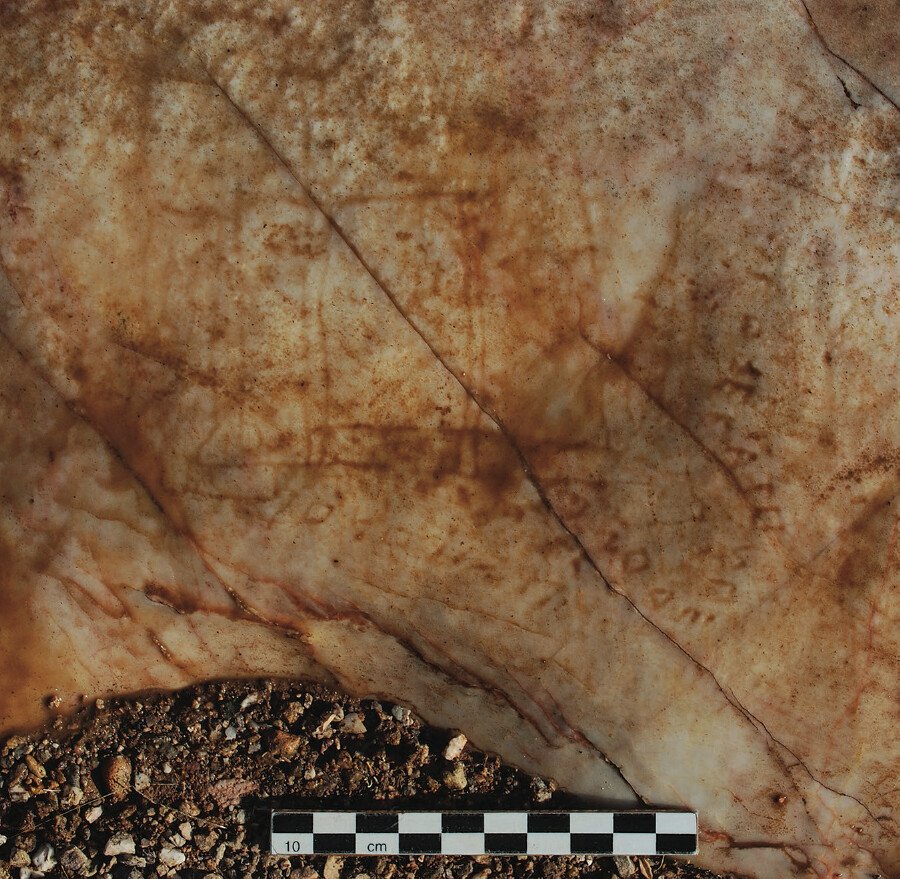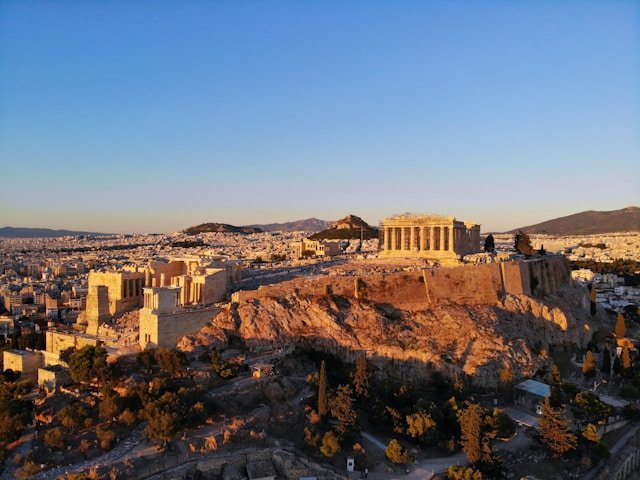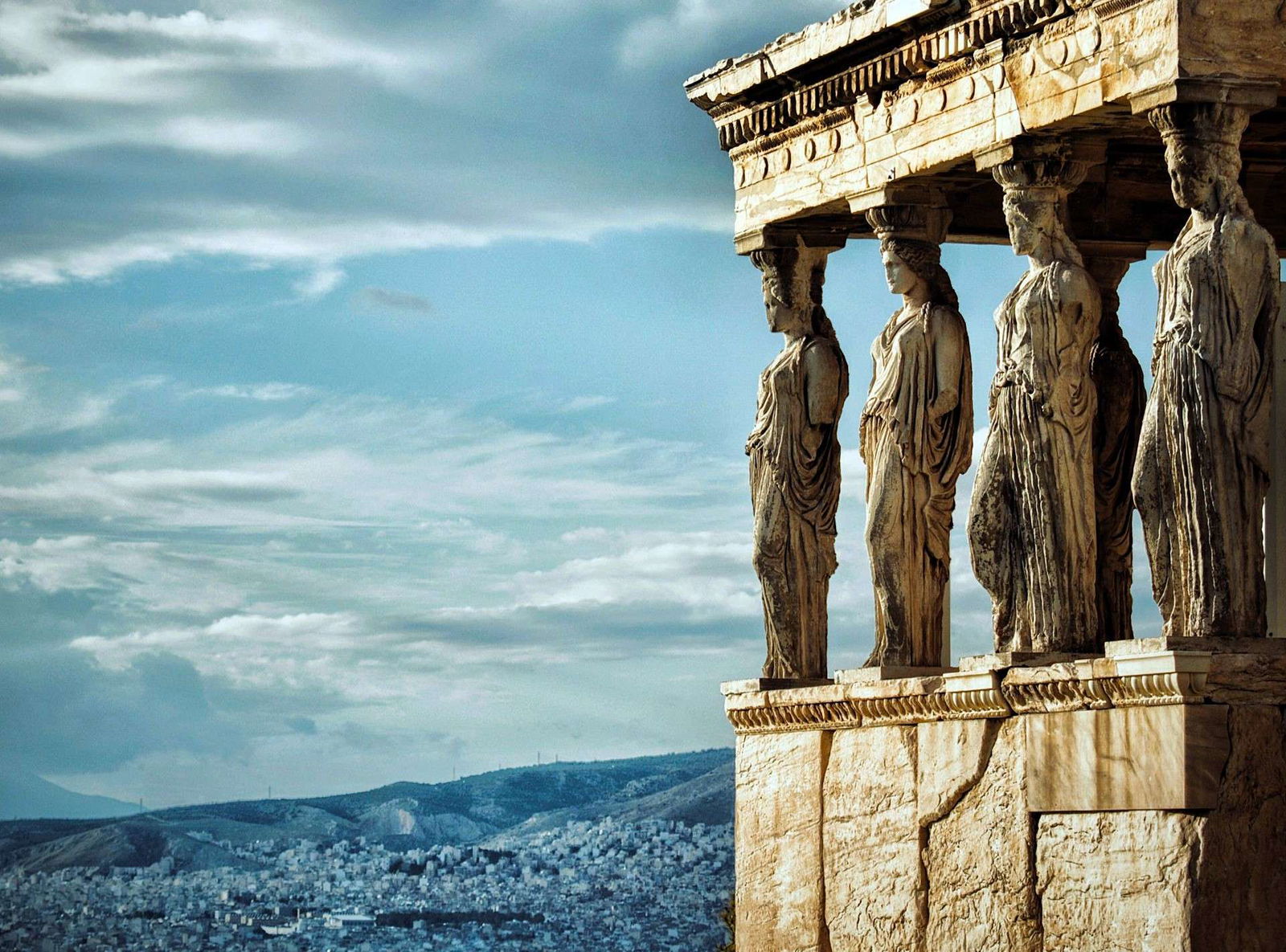Researchers have uncovered unique graffiti on Barako Hill near Vari, Attica that may indicate there once stood a massive ancient Greek temple or structure on Athen’s famous Acropolis that has since been lost to history.
According to a new study published in the American Journal of Archaeology, this ancient drawing, attributed to a shepherd named Mikon, depicts a building identified as “the Hekatompedon,” a term historically associated with large temples.
“Mikon is not otherwise known, but he was most likely a shepherd who made the graffito while grazing his flocks,” explained Janric van Rookhuijzen, an archaeologist and co-author of the study, in a recent article. “The version of the Greek alphabet used is very ancient, making it clear that the drawing was made as early as the 6th century BCE.”


The graffito (a term sometimes used to describe a singular piece of graffiti) was found among over 2,000 ancient engravings on marble outcrops in the hills north and east of Vari. These engravings, typically created by local herders, include simple drawings of animals, ships, and buildings, as well as short inscriptions. The particular graffito in question looks like a building facade, showing at least five columns, and is accompanied by an inscription identifying it as “the Hekatompedon.”
The term “Hekatompedon” refers to a structure approximately 100 feet in length. In ancient Greek architecture, this term was often used to describe large temples. But, it also means something else.
“The term is known to be the official ancient name of the famous temple dedicated to the Greek goddess Athena – later known as the Parthenon,” van Rookhuijzen explained. “It is likely that Mikon wanted to depict a building on the Acropolis of Athens.”
However, the inscriber, Mikon, pre-dated the Parthenon by several decades.
“Because the alphabet he used can be firmly dated to the 6th century BCE, the drawing must be at least 50 years older than the Parthenon, which was begun around 450 BCE,” van Rookhuijzen wrote.
According to the researchers, they believe that the graffito likely depicts an archaic temple on the Acropolis of Athens, possibly the so-called Bluebeard Temple or the Gigantomachy Temple. These temples are thought to have stood on the Acropolis at the end of the sixth century BCE, but were destroyed by the Persians in 480 BCE.


Utilizing high-resolution photographs and detailed sketches, the work of this long-dead shepherd was analyzed for the various letter forms, orthography, and layout to determine its authenticity. The team compared this drawing and writing style to other known examples, as well as other known architectural drawings and inscriptions from the area.
Based on their research, they note this is the earliest written record of the term “Hekatompedon” being used to describe a large temple or building. Moreover, noting the style of the graffito, as it features lines for columns and a cross line that represents an entablature (the horizontal lintel that sits on top of the columns), the study argues that this was probably some kind of symbolic gesture of admiration for the temple.
In simple terms, Mikon probably just dug big buildings, and shepherds and herders were notorious for their graffiti. The hill where this drawing was discovered is covered in ancient shepherd graffiti, including images of horses, boats, and, of course, ancient erotica.
“Why the shepherds produced so many graffiti is not known – it may have simply been a form of escapism during the dull moments of their job,” van Rookhuijzen mused.
“However, the graffito made by Mikon shows how a small scribble may be the key to tackling the historical riddles behind one the world’s most iconic archaeological sites.”
MJ Banias covers space, security, and technology with The Debrief. You can email him at mj@thedebrief.org or follow him on Twitter @mjbanias.

